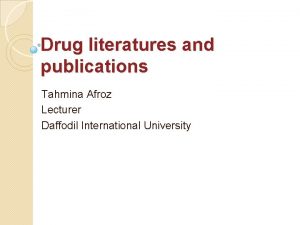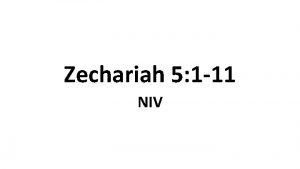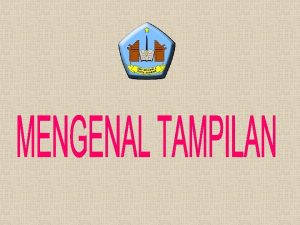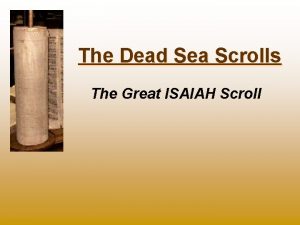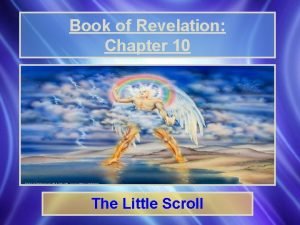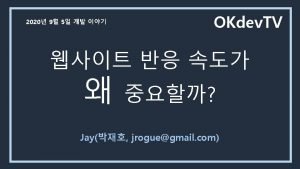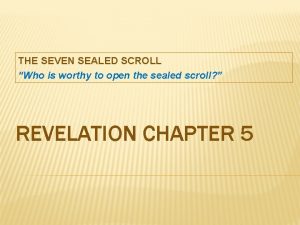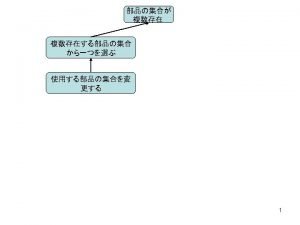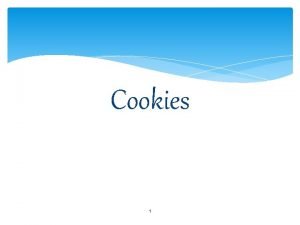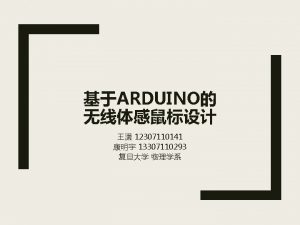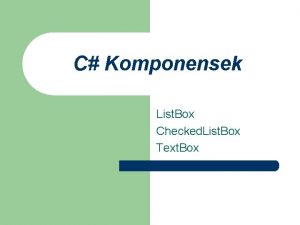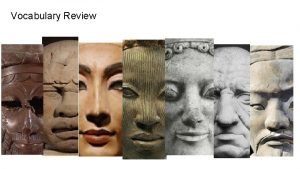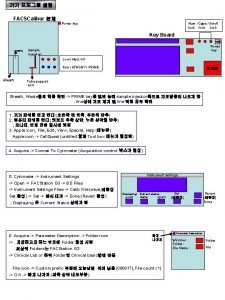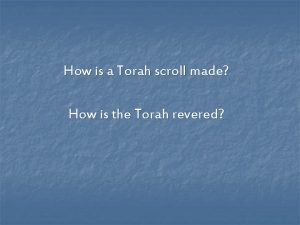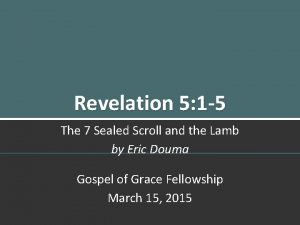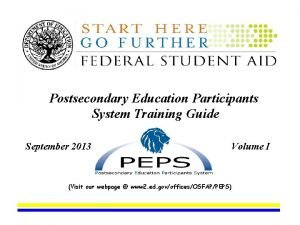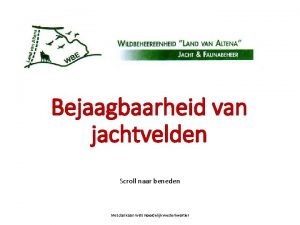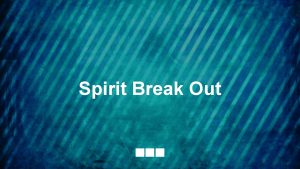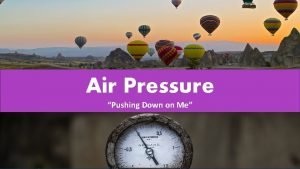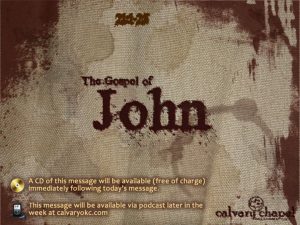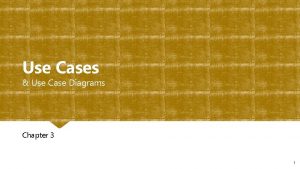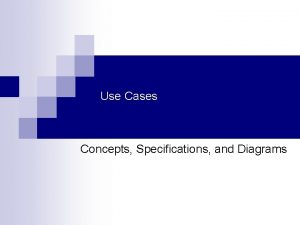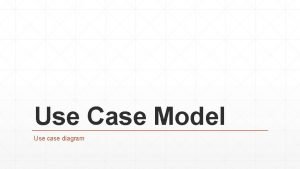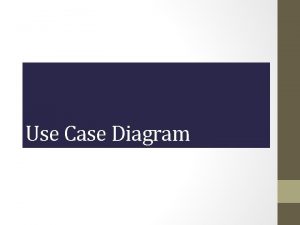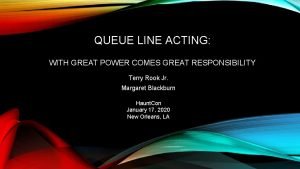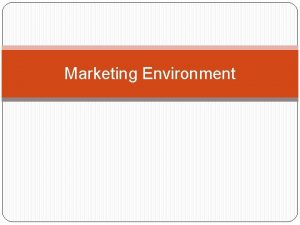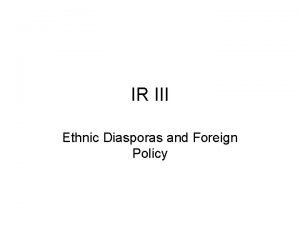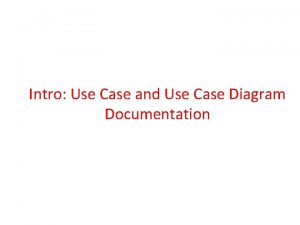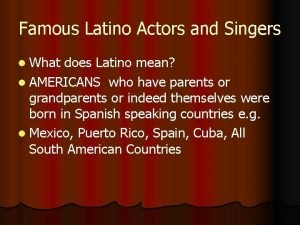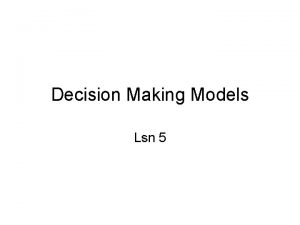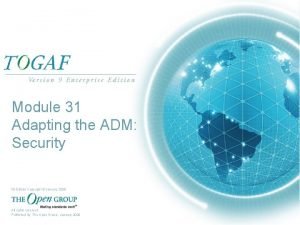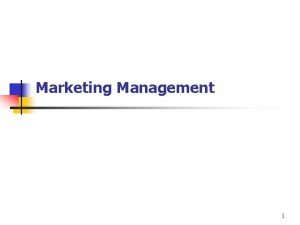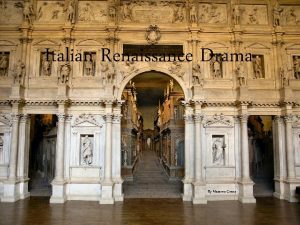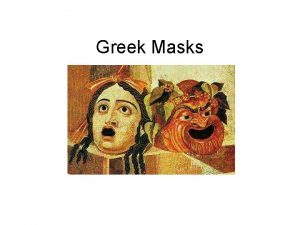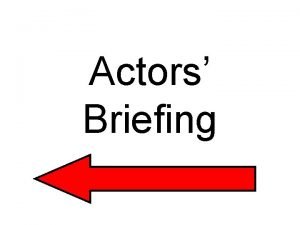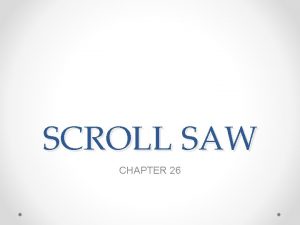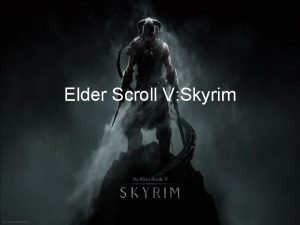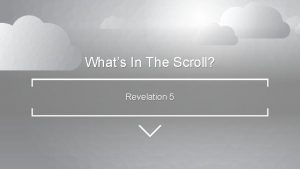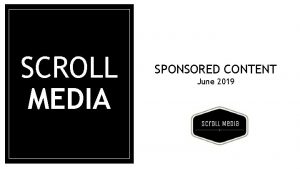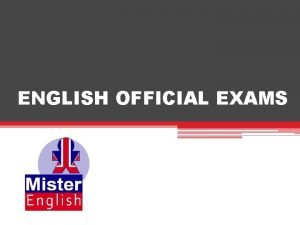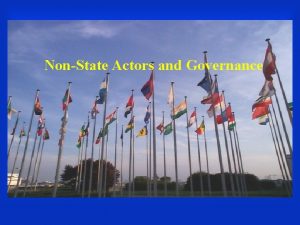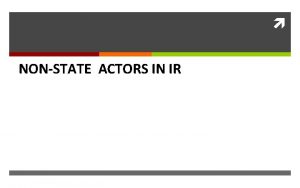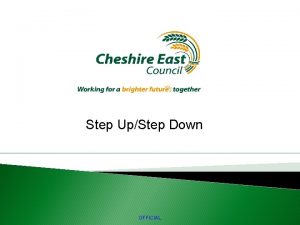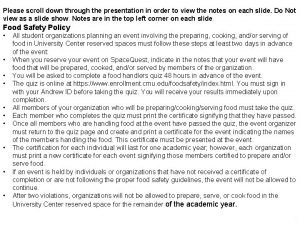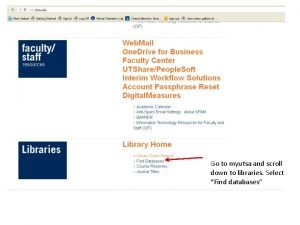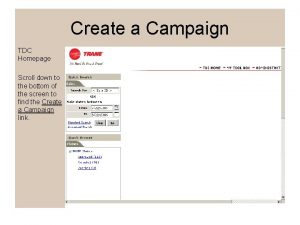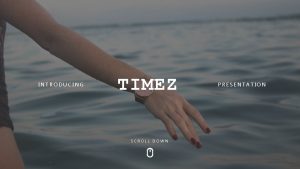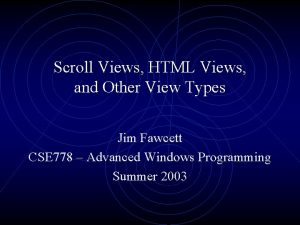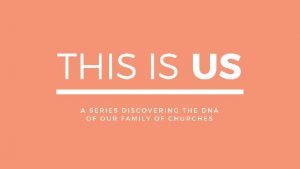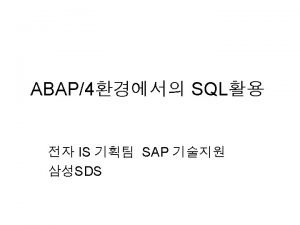Scroll Down to View CHAPTER 4 OFFICIAL ACTORS





































- Slides: 37

Scroll Down to View CHAPTER 4: OFFICIAL ACTORS AND THEIR ROLES IN PUBLIC POLICY From Thomas A. Birkland, An Introduction to the Policy Process, 4 th ed. New York: Routledge 1

Overview • Understand the difference between official and unofficial actors • Understand official and unofficial actors in the policy process • Prepare to understand the role of interest groups and power in policy making From Thomas A. Birkland, An Introduction to the Policy Process, 4 th ed. New York: Routledge 2

Approaches to politics and policy • • Institutionalism Behaviorism Neoinstitutionalism Changes in understanding of what “institution” means From Thomas A. Birkland, An Introduction to the Policy Process, 4 th ed. New York: Routledge 3

Official and unofficial actors in public policy • What are official actors? What makes them “official”? • What are unofficial actors? What makes them “unofficial”? • Are one set of actors more “legitimate” than another? From Thomas A. Birkland, An Introduction to the Policy Process, 4 th ed. New York: Routledge 4

The traditional institutionalist view of formal institutions • • • Automatically have power and authority Are relatively stable—monolithic? Have the final say in policy debate Their decisions are accepted Interest groups are petitioners or sometimes supplicants From Thomas A. Birkland, An Introduction to the Policy Process, 4 th ed. New York: Routledge 5

A more realistic view • Power and authority must be earned and reinforced • Are broadly stable, but are not at all monolithic • Do not issue the final word—decisions often lead to countermobilization From Thomas A. Birkland, An Introduction to the Policy Process, 4 th ed. New York: Routledge 6

A more realistic view • Power and authority must be earned and reinforced • Are broadly stable, but are not at all monolithic • Do not issue the final word—decisions often lead to countermobilization • Countermobilization is proof that decisions are not final, and not always accepted • Interests and members of formal institutions work together, not apart, in pursuit of goals • This looks more like the behaviorist approach From Thomas A. Birkland, An Introduction to the Policy Process, 4 th ed. New York: Routledge 7

Hierarchy? Or network? The Constitution and the People (really? ) Executive The Bureaucracy From Thomas A. Birkland, An Introduction to the Policy Process, 4 th ed. New York: Routledge Legislative Judicial Lower Courts 8

Hierarchy? Or network? Legislators News Media Agencie s Coalition 1 Groups Mediated by policy brokers or policy entrepreneurs Expert s Partie s From Thomas A. Birkland, An Introduction to the Policy Process, 4 th ed. New York: Routledge Legislators News Media Agencie s Coalition 2 Groups Expert s Partie s 9

Official actors • • Legislative branch Executive branch (president, governor) The bureaucracy Judicial branch (courts) From Thomas A. Birkland, An Introduction to the Policy Process, 4 th ed. New York: Routledge 10

Legislative branch • Why does Article I come first? – Does this rationale still hold today? • • • Make laws Hold hearings Perform oversight over the executive branch Do casework for constituents What are the power advantages and disadvantages of the legislative branch? From Thomas A. Birkland, An Introduction to the Policy Process, 4 th ed. New York: Routledge 11

Table 4. 1: Bills, Amendments, Joint Resolutions, and Concurrent Resolutions in the 105 th and 113 th Congresses From Thomas A. Birkland, An Introduction to the Policy Process, 4 th ed. New York: Routledge 12

Assessing legislative activity • Multiple bill introductions • Many bills are symbolic • Many introduced to serve constituent interests • How do we know what’s “on the agenda” just from a count of bills? – Why does it matter what’s on Congress’s agenda? – Is the volume of legislation the best measure of overall activity? From Thomas A. Birkland, An Introduction to the Policy Process, 4 th ed. New York: Routledge 13

Casework • Where do people take their problems with the federal government? – To where do they appeal if their initial complaints aren’t heard? • Why do members of Congress encourage casework? • How might casework be useful in the policy process? From Thomas A. Birkland, An Introduction to the Policy Process, 4 th ed. New York: Routledge 14

Oversight • What is oversight? • Why has it become more important? • Congress’s oversight tools – Hearings – Communications from • • Constituents Interest groups News media GAO, CBO, CRS From Thomas A. Birkland, An Introduction to the Policy Process, 4 th ed. New York: Routledge 15

Organization of the legislative branch • Parties – Elect the presiding officer or speaker – Determine who sits on committees • Committees – Chairs are very powerful – Screen bills – Set the legislative agenda • Is the Congress centralized? Or decentralized? – Evidence in favor? – Evidence against? From Thomas A. Birkland, An Introduction to the Policy Process, 4 th ed. New York: Routledge 16

Public policy and critiques of the legislature • Are legislatures out of touch with the people? • Are legislatures too slow? Do they suffer from gridlock? • Members and reelection • Congress as a decentralized institution • Congress as a localized, constituency-serving institution—examples? From Thomas A. Birkland, An Introduction to the Policy Process, 4 th ed. New York: Routledge 17

Implications • “Gridlock” or deliberation? • Major change requires major social movements • More focus on casework, oversight, and distributive spending • The House, in particular, may favor local interests over national interests – Over 80 percent of Americans think that incumbents should lose their seats – Yet, the vast majority of incumbents are reelected • Why? From Thomas A. Birkland, An Introduction to the Policy Process, 4 th ed. New York: Routledge 18

How does this matter for public policy? • How does the legislative branch identify and handle problems? • Is the legislative branch solely focused on finding and fixing problems? • What motivates its members? • How does Congress handle its rather extensive workload? – What are the implications for policy making? From Thomas A. Birkland, An Introduction to the Policy Process, 4 th ed. New York: Routledge 19

The executive branch • Chief executive (president, governor) • Staff (about 3, 000 appointed officials) • We consider the permanent civil service (“bureaucracy”) separately from the top level From Thomas A. Birkland, An Introduction to the Policy Process, 4 th ed. New York: Routledge 20

Presidential advantages over Congress • The veto power • The head of a unitary branch • Considerable power shifted toward the executive branch during – The Civil War – The New Deal – World War II – Cold War – Great Society From Thomas A. Birkland, An Introduction to the Policy Process, 4 th ed. New York: Routledge 21

Presidential advantages over Congress • Attracts a lot of media and public attention—can “go public” (the “Bully Pulpit”) • Has informational advantages over other branches • Therefore, has significant agenda-setting power From Thomas A. Birkland, An Introduction to the Policy Process, 4 th ed. New York: Routledge 22

Constraints on the president’s power • Inability to force action • Sheer size of his staff – “Going native” – Turnover • The will of the other branches – Appointments – Courts – The permanent bureaucracy • Result: The president may be more involved in agenda setting than in selecting alternative policies From Thomas A. Birkland, An Introduction to the Policy Process, 4 th ed. New York: Routledge 23

Agencies and bureaucrats • What is a bureaucracy? – Division of labor – Impersonal, unbiased rules – Staff expertise among civil servants – Obvious hierarchy • What is a civil servant? – Selected on merit – Possess technical knowledge • What motivates civil servants? From Thomas A. Birkland, An Introduction to the Policy Process, 4 th ed. New York: Routledge 24

Is the bureaucracy (that is, the government) too big? • 1999 – 2. 79 million civilian employees – $1. 8 trillion budget – 4. 47% of Americans work for all government (2. 09% work for the federal government), according to U. S. BLS • 2008 – 2. 73 million civilian employees (slight decline) – About $3. 0 trillion budget – 4. 65% of Americans work for all government (1. 88% work for the federal government) • How do we measure too big? From Thomas A. Birkland, An Introduction to the Policy Process, 4 th ed. New York: Routledge 25

Billions of Dollars Figure 4. 2: Overall Federal Outlays, 1940– 2019, Current and Constant Dollars From Thomas A. Birkland, An Introduction to the Policy Process, 4 th ed. New York: Routledge 26

Figure 4. 3: Federal Government Outlays as Percentage of GDP, 1940– 2019 From Thomas A. Birkland, An Introduction to the Policy Process, 4 th ed. New York: Routledge 27

Billions of dollars Figure 4. 4: Federal Government Outlays Per Capita, Constant 2009 Dollars, 1940– 2019 From Thomas A. Birkland, An Introduction to the Policy Process, 4 th ed. New York: Routledge 28

Figure 4. 5: Total Number of State and Local Government Employees, 1982– 2011 From Thomas A. Birkland, An Introduction to the Policy Process, 4 th ed. New York: Routledge 29

Figure 4. 6: Number of Federal Civilian Employees, 1981– 2015 From Thomas A. Birkland, An Introduction to the Policy Process, 4 th ed. New York: Routledge 30

Figure 4. 7: Comparative Growth of the Federal Budget and Federal Employment, 1981– 2015 From Thomas A. Birkland, An Introduction to the Policy Process, 4 th ed. New York: Routledge 31

Policy implications • Since at least 2008, deficits and debt have grown quickly, although pace is slowing • What accounts for this growth? • The number of employees is flat, while spending has grown very fast – Why? • Do we have “big government”? How, or how do we not? From Thomas A. Birkland, An Introduction to the Policy Process, 4 th ed. New York: Routledge 32

What do government agencies do? • Provide public goods – Why must government provide such goods? – Examples? • Provide services that people may not want provided by the private sector – Electricity – Phone – Water From Thomas A. Birkland, An Introduction to the Policy Process, 4 th ed. New York: Routledge 33

Bureaucracy and accountability • Bureaucrats are not elected, yet they make policy • Bureaucrats are supposed to act in the “public interest” – What is the “public interest”? • Bureaucrats are given more or less discretion based on – – Expertise Authority Leadership Political acceptability • The problem of agency “capture” • Agencies compete for attention and discretion From Thomas A. Birkland, An Introduction to the Policy Process, 4 th ed. New York: Routledge 34

The courts • Hamilton: “The least Dangerous Branch” • The courts are neither impotent nor all powerful • Rely on enforcement by other actors— executive and legislative branches, private actors – Why are most court decisions respected? From Thomas A. Birkland, An Introduction to the Policy Process, 4 th ed. New York: Routledge 35

The courts • The Courts do make policy – Remember the definition of public policy – Their logic: legal reasoning, judicial review • The courts are undemocratic institutions – But, was our republic designed as a democracy? – How does one balance popular will with constitutional limit? – What would our system look like without judicial review? • Are courts very influential as policy makers? From Thomas A. Birkland, An Introduction to the Policy Process, 4 th ed. New York: Routledge 36

Implications for policy • Policy change is slow, and takes time to develop • Coalition building is important • The institutions are important gatekeepers, but are not the only participants From Thomas A. Birkland, An Introduction to the Policy Process, 4 th ed. New York: Routledge 37
 Daffodil drug
Daffodil drug Flying scroll zechariah
Flying scroll zechariah Title bar berfungsi untuk...
Title bar berfungsi untuk... The great isaiah scroll
The great isaiah scroll The little scroll
The little scroll Impulse-style scroll animations
Impulse-style scroll animations Sealed scroll
Sealed scroll Window scroll
Window scroll Rolled cookies definition
Rolled cookies definition Mouse move arduino
Mouse move arduino Horizontal scroll
Horizontal scroll Who is this?
Who is this? ㄴㅊ개ㅣㅣㅣㄷㄱ.채ㅡ
ㄴㅊ개ㅣㅣㅣㄷㄱ.채ㅡ How is a torah scroll made
How is a torah scroll made Revelation 5:1-5
Revelation 5:1-5 Horizontal scroll
Horizontal scroll Scroll naar beneden
Scroll naar beneden King jesus your the name we're lifting high
King jesus your the name we're lifting high Hands up hands down
Hands up hands down There's a place where mercy reigns
There's a place where mercy reigns Why doesn’t air pressure crush your desk?
Why doesn’t air pressure crush your desk? I fled him down the nights and down the days
I fled him down the nights and down the days Use case with multiple actors
Use case with multiple actors Use case primary and secondary actors
Use case primary and secondary actors Pengertian include dan extend
Pengertian include dan extend Use case with multiple actors
Use case with multiple actors Actors queue
Actors queue Define marketing environment
Define marketing environment Actors in foreign policy
Actors in foreign policy Pengertian include dan extend
Pengertian include dan extend Gloria estefan married to emilio estevez
Gloria estefan married to emilio estevez Actors in foreign policy
Actors in foreign policy Use case diagram for hospital management system
Use case diagram for hospital management system Security actors
Security actors Marketing management
Marketing management Italian renaissance actors
Italian renaissance actors Why did they wear masks in greek theatre
Why did they wear masks in greek theatre Greek actors
Greek actors
